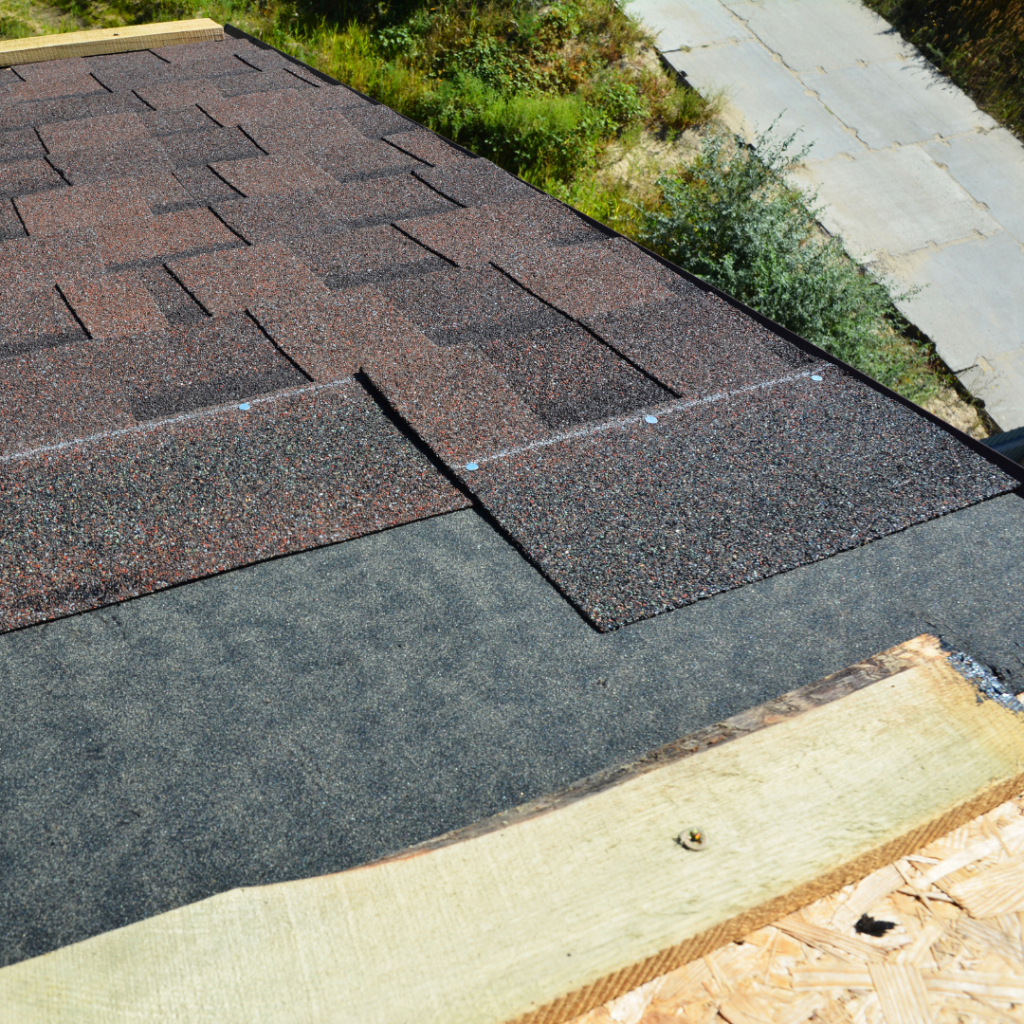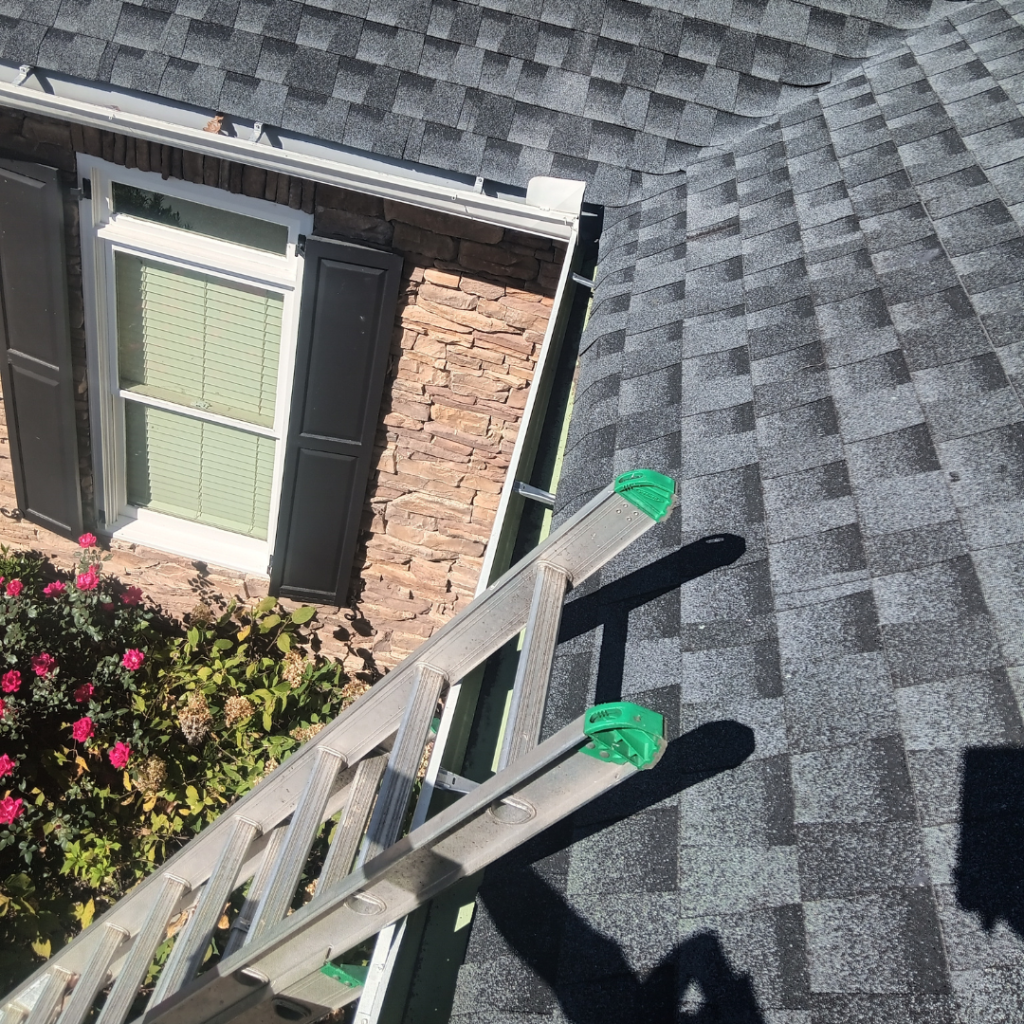Asphalt Shingles
Asphalt shingles are a popular roofing material known for their affordability, durability, and ease of installation. Widely used in residential roofing in Atascocita, AR, they come in various styles and colors, providing versatility for homeowners. Asphalt shingles are made from a fiberglass or organic felt base saturated with asphalt, topped with mineral granules that offer UV protection and weather resistance. There are different types, including three-tab, architectural, and luxury shingles, each offering unique benefits.
Historically, asphalt shingles have evolved from organic bases to fiberglass, with significant milestones such as the introduction of mineral granules and reflective shingles for energy efficiency. The installation process is straightforward, involving steps like preparing the roof surface, laying shingles, and ensuring proper sealing. Routine maintenance, such as regular inspections and debris removal, helps extend their lifespan, which typically ranges from 20 to 30 years.
Environmentally, modern asphalt shingles are increasingly sustainable, often incorporating recycled materials and offering recycling options. Cost-wise, they provide a balanced combination of low initial costs and long-term value, making them a competitive choice against other roofing materials.
What Are Asphalt Shingles?
Asphalt shingles are a popular roofing material known for their affordability, durability, and ease of installation. They are widely used in residential roofing across North America and come in a variety of styles and colors, making them a versatile choice for many homeowners.
Composition and Materials
Understanding the composition and materials of asphalt shingles helps in appreciating their benefits and performance.
What Are Asphalt Shingles Made Of?
Asphalt shingles are primarily composed of a fiberglass or organic felt base, which is then saturated with asphalt. This base provides strength and flexibility. The top layer consists of mineral granules that add color and protect the shingles from UV rays and weather damage. These granules also contribute to the overall durability and aesthetic appeal of the shingles. The combination of these materials results in a strong, weather-resistant roofing solution that can withstand various environmental conditions.
Different Types of Asphalt Shingles
There are several types of asphalt shingles available, each offering unique features and benefits:
- Three-Tab Shingles: These are the most basic and economical type. They have a flat, uniform appearance and are named for the three tabs, or cutouts, along their lower edge, which create a distinctive pattern.
- Architectural Shingles: Also known as dimensional or laminate shingles, these offer a more textured and layered look. They are thicker and more durable than three-tab shingles, providing better wind resistance and a longer lifespan.
- Luxury Shingles: These high-end shingles mimic the appearance of natural materials like slate or cedar shakes. They offer superior durability and aesthetics, making them a premium option for homeowners seeking enhanced curb appeal.
History and Development
The history and development of asphalt shingles highlight their evolution into a popular and reliable roofing material used in homes today.
Evolution of Asphalt Shingles
Asphalt shingles have a rich history dating back to the late 19th century. Initially developed as an alternative to wood and slate roofing, asphalt shingles provided a more affordable and durable option. The earliest versions were made from organic materials like cotton or wool, saturated with asphalt to enhance waterproofing and durability. Over time, advancements in materials and manufacturing processes led to the creation of fiberglass-based shingles in the mid-20th century, which offered improved strength, fire resistance, and longer lifespans. This evolution allowed asphalt shingles to become the dominant roofing material in North America, favored for their balance of cost, performance, and aesthetic versatility.
Key Milestones in Shingle Technology
Several key milestones have marked the development of asphalt shingle technology:
Introduction of Mineral Granules (1910s): The addition of mineral granules to the surface of shingles provided enhanced UV protection and durability. This innovation also allowed for a variety of colors and improved the aesthetic appeal of asphalt shingles.
Development of Fiberglass Shingles (1960s): The shift from organic to fiberglass bases significantly improved the fire resistance and overall durability of asphalt shingles. Fiberglass shingles became the standard due to their superior performance and longer lifespan.
Architectural Shingles (1980s): The creation of architectural shingles introduced a more textured, layered appearance that mimicked the look of natural materials. These shingles offered greater wind resistance and durability, catering to homeowners seeking both aesthetics and performance.
Reflective Shingles (2000s): The development of reflective asphalt shingles aimed at improving energy efficiency by reducing heat absorption. These shingles help lower cooling costs and enhance the overall energy efficiency of homes.
These milestones have contributed to the continuous improvement of asphalt shingles, making them a reliable and versatile roofing option for homeowners.
Installation Process
Installing asphalt shingles involves several steps to ensure a durable and effective roofing solution. Here, we outline the preparation, installation, and tools required for the process.
Preparing the Roof Surface
Proper preparation of the roof surface is crucial for a successful asphalt shingle installation. The roof deck must be clean, dry, and in good condition. Old roofing materials should be removed, and any damaged sections of the deck should be repaired or replaced. Installing a waterproof underlayment or roofing felt over the deck provides an additional layer of protection against moisture. This step helps ensure a smooth and secure base for the shingles.

Step-by-Step Installation Guide
The step-by-step installation process of asphalt shingles includes:
Installing the Starter Strip: Begin by installing a starter strip along the edge of the roof. This helps prevent water infiltration and provides a secure base for the first row of shingles.
Laying the First Row: Start at the bottom edge of the roof and lay the first row of shingles, ensuring they overhang the edge slightly. Secure each shingle with roofing nails, placing them just above the cutouts.
Continuing Up the Roof: Lay subsequent rows of shingles, overlapping each row according to the manufacturer’s instructions. Make sure the shingles are staggered to avoid aligning the seams.
Installing Ridge Cap Shingles: Once all the field shingles are in place, install the ridge cap shingles along the roof’s peak. These shingles provide a finished look and help protect the roof from water infiltration at the ridges.
Final Inspection and Cleanup: Inspect the roof to ensure all shingles are securely fastened and properly aligned. Clean up any debris and ensure the roof is free of nails and other materials.
Tools and Materials Needed
The tools and materials required for installing asphalt shingles include:
Roofing nails
Hammer or nail gun
Utility knife
Chalk line
Tape measure
Roofing felt or underlayment
Starter strips
Asphalt shingles
Ridge cap shingles
Roofing cement (optional)
Ladder and safety equipment
Having the right tools and materials on hand is essential for a smooth and efficient installation process.
Maintenance and Care
Proper maintenance and care are essential to ensure the longevity and performance of asphalt shingle roofs. Regular upkeep can help identify and address potential issues before they become significant problems.

Routine Maintenance Tips
To keep your asphalt shingle roof in optimal condition, follow these routine maintenance tips:
Regular Inspections: Conduct bi-annual roof inspections, ideally in the spring and fall. Look for signs of damage, such as cracked, curled, or missing shingles.
Clean Gutters and Downspouts: Ensure gutters and downspouts are free of debris to prevent water backup and roof damage. Clean them regularly to maintain proper water drainage.
Remove Debris: Clear leaves, branches, and other debris from the roof surface. Accumulated debris can trap moisture and cause shingle deterioration.
Trim Overhanging Branches: Trim any tree branches that hang over the roof to prevent damage from falling limbs and to reduce debris buildup.
Check Flashing and Seals: Inspect flashing around chimneys, vents, and skylights for signs of wear or damage. Reseal or replace as needed to prevent leaks.
Identifying and Addressing Common Issues
Identifying and promptly addressing common issues can extend the life of your asphalt shingle roof:
- Missing or Damaged Shingles: Replace missing or damaged shingles immediately to prevent water infiltration and further damage. Use matching shingles to maintain the roof’s appearance.
- Algae and Moss Growth: In humid climates, algae and moss can grow on asphalt shingles, causing discoloration and potential damage. Clean affected areas with a solution of water and bleach, and consider installing algae-resistant shingles if the problem persists.
- Granule Loss: Over time, asphalt shingles may lose granules, which can accumulate in gutters. If you notice significant granule loss, inspect the shingles closely. Excessive granule loss can indicate the need for replacement.
- Leaks and Water Stains: Check your attic for signs of leaks or water stains, which can indicate roof damage. Address leaks promptly by repairing or replacing affected shingles and ensuring proper sealing around roof penetrations.
- Curling or Buckling Shingles: Shingles that are curling or buckling may indicate poor ventilation or underlying issues with the roof deck. Improve attic ventilation and replace affected shingles to prevent further damage.
Durability and Lifespan
Asphalt shingles are known for their reliable durability and reasonable lifespan, making them a popular choice for homeowners.
Expected Lifespan of Asphalt Shingles
The expected lifespan of asphalt shingles typically ranges from 20 to 30 years. The actual lifespan can vary based on factors such as the quality of the shingles, installation practices, and environmental conditions. High-quality architectural shingles often last longer than basic three-tab shingles. Regular maintenance and timely repairs can also extend the life of an asphalt shingle roof, ensuring it provides effective protection for many years.
Factors Affecting Durability
Quality of Materials: Higher-quality asphalt shingles are made with better materials and more advanced manufacturing processes, resulting in increased durability and a longer lifespan. Investing in premium shingles can pay off in the long run with fewer repairs and replacements.
Installation Practices: Proper installation is crucial for the durability of asphalt shingles. Incorrect installation can lead to issues such as improper sealing, misaligned shingles, and inadequate ventilation, all of which can reduce the roof’s lifespan. It’s essential to hire experienced and certified roofing contractors to ensure the best installation practices.
Weather Conditions: Extreme weather conditions, such as heavy rain, high winds, hail, and intense sunlight, can take a toll on asphalt shingles. Shingles in regions with harsh weather may experience accelerated wear and tear. Choosing shingles designed for specific weather conditions can enhance durability.
Maintenance: Regular maintenance plays a significant role in the longevity of asphalt shingles. Routine inspections, cleaning, and prompt repairs can prevent minor issues from developing into major problems, thus extending the roof’s lifespan.
Ventilation: Proper attic ventilation is vital for maintaining the health of an asphalt shingle roof. Good ventilation helps regulate temperature and moisture levels, preventing issues like ice dams in winter and overheating in summer, both of which can damage shingles.
Roof Slope and Orientation: The slope and orientation of the roof can impact the durability of asphalt shingles. Steeper roofs tend to shed water more effectively, reducing the risk of water damage. Roofs with greater sun exposure may experience faster wear due to UV radiation.

Environmental Considerations
Asphalt shingles offer several environmental considerations, particularly in terms of sustainability and end-of-life disposal options.
Sustainability of Asphalt Shingles
The sustainability of asphalt shingles has improved significantly over the years. Modern asphalt shingles are often manufactured with recycled materials, reducing the demand for new raw resources. Manufacturers are increasingly adopting eco-friendly practices in their production processes, such as using energy-efficient technologies and minimizing waste. Additionally, some asphalt shingles are designed with reflective coatings that improve energy efficiency by reducing heat absorption, which helps lower cooling costs and decreases the overall energy consumption of homes. These advancements contribute to the sustainability of asphalt shingles, making them a more environmentally friendly roofing option.
Recycling and Disposal Options
Recycling asphalt shingles is an effective way to reduce their environmental impact. Many recycling programs now accept used asphalt shingles, which are processed and repurposed for use in various applications, such as paving materials for roads and driveways. This recycling process helps divert waste from landfills, conserving natural resources and reducing the environmental footprint of asphalt shingles. Homeowners can contribute to sustainability by choosing recycling options for their old shingles when replacing their roofs.
Disposal options for asphalt shingles that cannot be recycled include proper disposal at designated facilities that handle construction and demolition debris. It’s important to follow local regulations and guidelines for the disposal of roofing materials to ensure environmentally responsible practices.
By considering these environmental aspects, homeowners can make more informed decisions about their roofing choices and contribute to a more sustainable future.
Cost Analysis
A thorough cost analysis of asphalt shingles involves examining both the initial costs and the long-term value, as well as comparing these costs with other roofing materials.
Initial Costs vs. Long-Term Value
Asphalt shingles are known for their affordability, with a lower initial cost compared to many other roofing materials. The cost of purchasing and installing asphalt shingles is significantly less than options like metal, tile, or slate. This makes asphalt shingles an attractive choice for homeowners looking for a budget-friendly roofing solution.
Despite the lower initial cost, asphalt shingles offer substantial long-term value. They typically last 20-30 years with proper maintenance, providing durable and reliable protection for homes. The ease of maintenance and repair further contributes to their value, as minor issues can often be addressed without professional help, saving on repair costs. The combination of affordability and durability ensures that asphalt shingles remain a cost-effective roofing option over their lifespan.
Cost Comparisons with Other Roofing Materials
When comparing the costs of asphalt shingles with other roofing materials, several factors come into play:
Asphalt Shingles vs. Metal Roofing: Metal roofs have a higher initial cost but can last 40-70 years, which may offer better long-term value. However, the affordability of asphalt shingles makes them a more accessible option for many homeowners, particularly those on a tighter budget.
Asphalt Shingles vs. Tile Roofing: Tile roofs are more expensive to install and require additional structural support due to their weight. While tile roofs can last over 50 years, their high initial cost and the need for specialized installation can be prohibitive.
Asphalt Shingles vs. Slate Roofing: Slate roofs are among the most durable, lasting up to 100 years, but they are also the most expensive in terms of materials and installation. The cost of slate roofing can be several times higher than asphalt shingles, making asphalt a more economical choice for many.
Asphalt Shingles vs. Wood Shingles: Wood shingles offer a unique aesthetic but are generally more expensive than asphalt shingles and require more maintenance to prevent rot and insect damage. Asphalt shingles provide a similar look with less maintenance and lower costs.
Overall, asphalt shingles provide a balanced combination of affordability, durability, and ease of maintenance, making them a competitive choice against other roofing materials.
Roofers Atascocita TX – The Atascocita roofing contractor you can trust!
